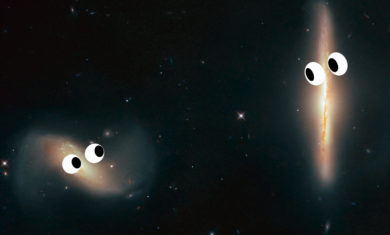Brothers & Sisters of Cronus: Meet Saturn’s Moons!
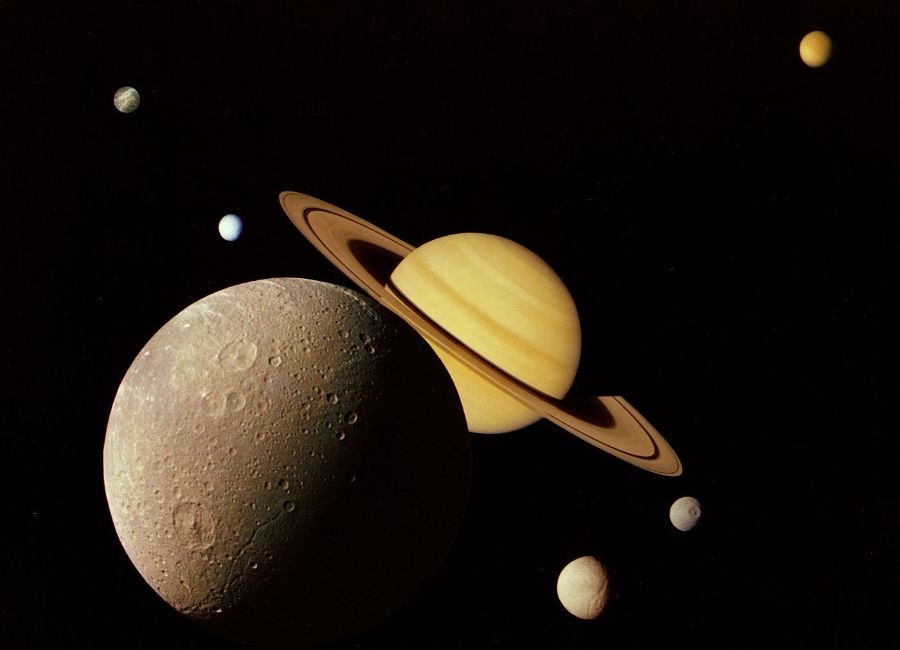
Header Image: This montage of images of the Saturnian system was prepared from an assemblage of images taken by the Voyager 1 spacecraft during its Saturn encounter in November 1980. This artist’s view shows Dione in the forefront, Saturn rising behind, Tethys and Mimas fading in the distance to the right, Enceladus and Rhea off Saturn’s rings to the left, and Titan in its distant orbit at the top. Credit: NASA/JPL
Saturn is arguably one of the most iconic planets in our Solar System, immediately identifiable by its dazzling rings. But while those rings might be eye-catching, Saturn’s amazing moons also deserve a look! Saturn hosts a panoply of more than 60 moons, although that number might be up for debate: some of the tiniest “moonlets” are actually embedded in its rings, where they blend in with the crowd of other small chunks of icy material that make up the rings themselves.
Planetary scientists have measured the orbits of 62 of Saturn’s most notable moons, but named just 53 of them. The larger moons take the names of the Titans of Greek mythology (in Greek, Saturn is Cronus, and the Titans are the brothers and sisters of Cronus), while the more distant “irregular” moons draw their names from Norse and Gallic myths. Let’s take a look at three of Saturn’s most notable satellites.
Titan
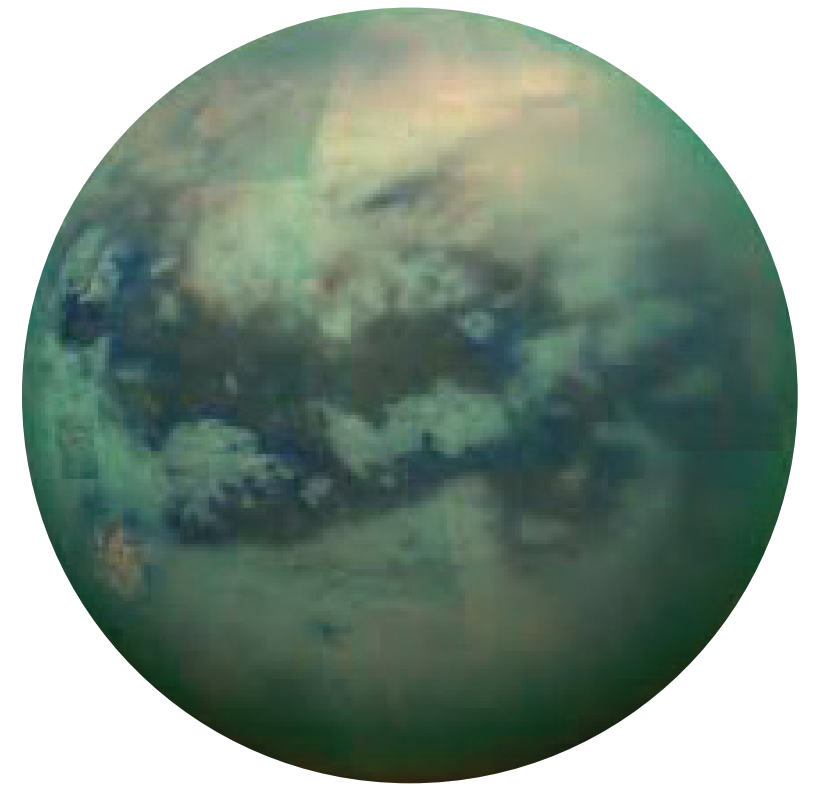
Saturn’s largest moon, Titan, really lives up to its name. Larger than the planet Mercury (and almost as large as Mars), this moon makes up 96 percent of all the total mass in Saturn’s moons. Beyond its size, what’s most notable about Titan is that it is the only known moon with a substantial atmosphere, and also the only known body in the Solar System (besides Earth) to have large reservoirs of standing liquid on its surface. Don’t pack for a Titan beach vacation yet, though: Being in the outer Solar System means Titan is a chilly -290 degrees Fahrenheit, and those lakes are largely made up of ethane and other hydrocarbons (which are liquid at cold temperatures).
Titan’s atmosphere is almost all nitrogen, with a smattering of other gases, as well as a thick yellowish haze that has long challenged our ability to study the fascinating features on its surface. In fact, some of the best data on Titan had to be taken by dropping instruments below that haze, as the Cassini spacecraft did by sending the Huygens probe to Titan’s surface in 2005. In some ways, Titan resembles a through-the-looking-glass version of early Earth—a geologically active world with an ever-changing surface, albeit much colder. For this reason, planetary scientists have long wondered whether life could exist on Titan, using liquid hydrocarbons for chemistry instead of water.
Enceladus
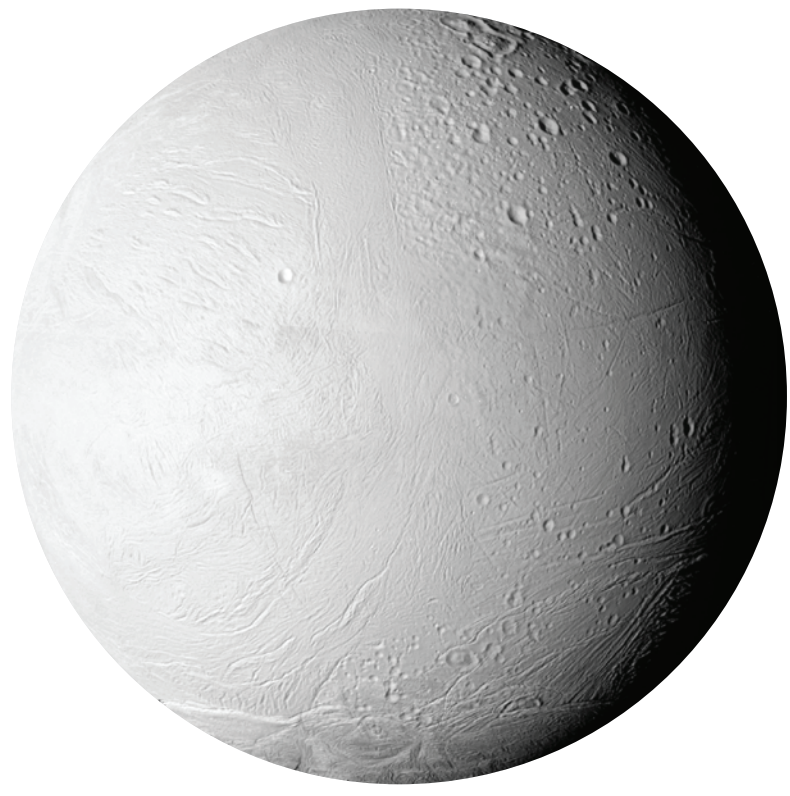
Striped with long fractures, Enceladus is known for its spectacular plumes—jets of saltwater and sand grains that spray out into space, replenishing material in one of Saturn’s rings. These plumes are enticing to planetary scientists who wish to study what lies beneath Enceladus’s surface: they indicate that an actual liquid ocean must be below the ice and that there must be some internal geological heating for it to remain unfrozen. Under-ice oceans are particularly interesting as potential sites for life in the Universe, but by definition, they are inconveniently sealed away under ice caps. While space missions are in the works for similar worlds (like Jupiter’s moon Europa), it’s a gift that Enceladus regularly spits some of this material out into space where it’s easier to study.
Mimas
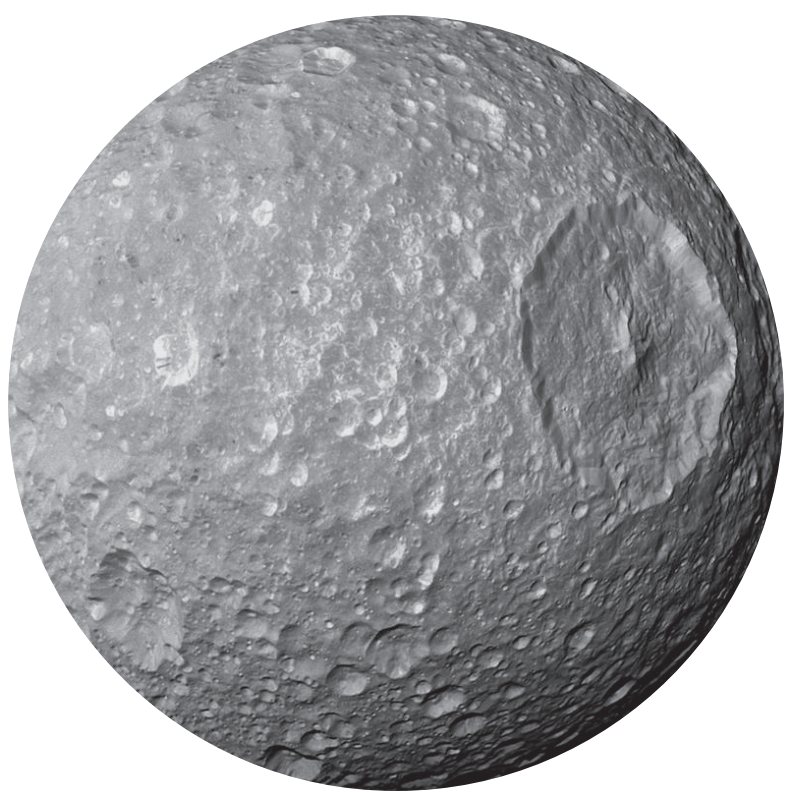
Mimas is the runt of Saturn’s litter of large moons, small in both size and mass. Its low density indicates that it is likely made up mostly of ice. As an icy world without Titan’s weather or Enceladus’s geysers, you would think Mimas wouldn’t get much attention—until you see a picture of it! Mimas sports the whopping Hershel crater, a huge black eye almost a third its diameter. This unmissable crater makes Mimas look a little like the infamous Death Star from Star Wars. Some moons will do anything for a little publicity.
A complete tour of Saturn’s amazing moons could fill the pages of a book—and that book would have to be constantly rewritten as we learn more and more about these diverse worlds! We encourage you to visit Saturn and its many moons in the Adler’s Our Solar System gallery, where you can get to know the whole family.




